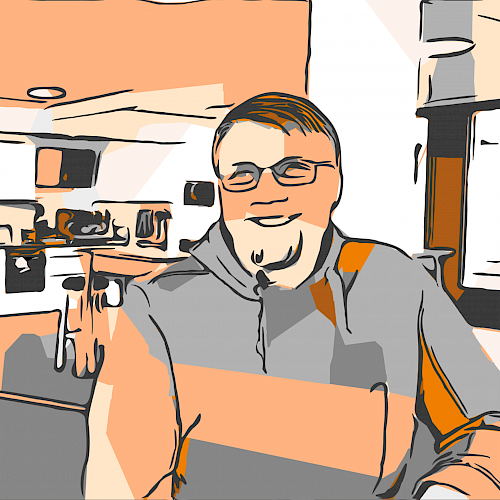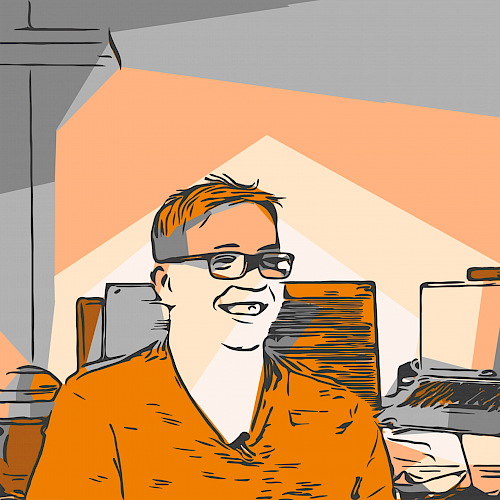
Provision of the Service Platform Retail for the VW Group
 Open navigation
Open navigation Since the activities as a Systems Architect in the DevOps environment come from both the areas of development and IT operations, the tasks are very versatile. The focus is more on automation, monitoring, and operation of the software. In the product or service business, they create the appropriate agile infrastructure for demanding software projects. Positions and concrete fields of application are not fixed at jambit.
And what might a typical day at work of a Systems Architect look like? Manfred Schreiber and Stefan Ströbl are both Systems Architects in the DevOps environment at jambit. We asked both of them about their daily work and got both similar but also different answers. Both build software systems, develop infrastructures, and optimize operational processes. Both work with Scrum and in Kanban mode – if it makes more sense.
So where is the difference? In the details of a typical day.


Find out in this video interview what our experts particularly like about their job as Systems Architects (only available in German).
One essential cornerstone is thinking outside the box of a single discipline. For working in a DevOps environment, Systems Architects need a t-shaped skill profile with deep expertise in operations, i.e. systems architecture, and general, broad development expertise, i.e. from the field of software development. But how to get such a skill set? Our jambit skill game creates your personal profile of knowledge from selected technologies and domains (currently only available in German, but we bet you'll understand all the technical terms anyway).
There are different ways to learn the profession of a Systems Architect. A typical way of education is a degree in computer science or technical computer science – but also business informatics, electrical engineering, mechatronics, or a comparable engineering discipline. Another good way is a training as IT specialist for systems integration. With a solid foundation in networking and computing, DevOps skills can be developed before entering the workforce. In your study, majors such as computer networks as well as operating systems can provide a solid theoretical foundation for this field. If you are not sure if you are interested in this field, an internship is the first way to approach this line of work. A working student job might also be a fit for you, since in addition to the theoretical studies, you can expand your practical knowledge in parallel. jambit also offers the possibility for internships in the field of DevOps or studies with in-depth practice (job ads only available in German).
However, a successful professional entry into the DevOps environment can also take place "on-the-job" after the training. If you are interested in infrastructure, you can specialize and develop further with a professional training in the direction of containers, cloud computing, security, or automation. At jambit, we believe that continuous knowledge exchange is essential for motivation and outstanding project work. Therefore, at jambit we invest in knowledge – knowledge building, knowledge sharing, and knowledge management. jambit wants its employees to always stay Top of Mind.
"It wouldn't work for me without interesting projects," says Stefan Ströbl satisfied with the project situation. jambit as a software service provider is a project company and serves the most diverse industries. For a Systems Architect, this is exactly the right playground to be creative. If you feel comfortable with one topic, you can stay within one industry and expand your client base. If a project comes to an end or you feel the desire for a change, you can join another project or change the business division. With each new project, a Systems Architect gains new insights and perspectives and never stops learning. Check out our Innovation Stories to learn about the project variety jambit has to offer.
Besides our interesting projects, social components and human interaction play a major role. Our employees appreciate their team, smart colleagues, and the open jambit culture. Things are actually getting done instead of only talking about it. The culture is characterized by helpfulness and flat hierarchies. People like to meet at the coffee machine and exchange ideas with other experts over a coffee.
Manfred Schreiber explains: "I also like working at jambit because of my colleagues. Even when I was on-site at the client's for four days, I had contact with other jambitees. That's important to me because they can give me advice in case of a problem. Even if you don't work together on a daily basis, you help each other out. And through this exchange, I also get new, valuable impulses for my work."
Learn more about working at jambit.
You would like to exchange ideas with us or receive further information? If so, we look forward to receiving your message, questions, requests and suggestions. Please do not hesitate to contact Johanna Pröhl directly. As HR Specialist Recruitment, she will be happy to assist you.

Contact us now